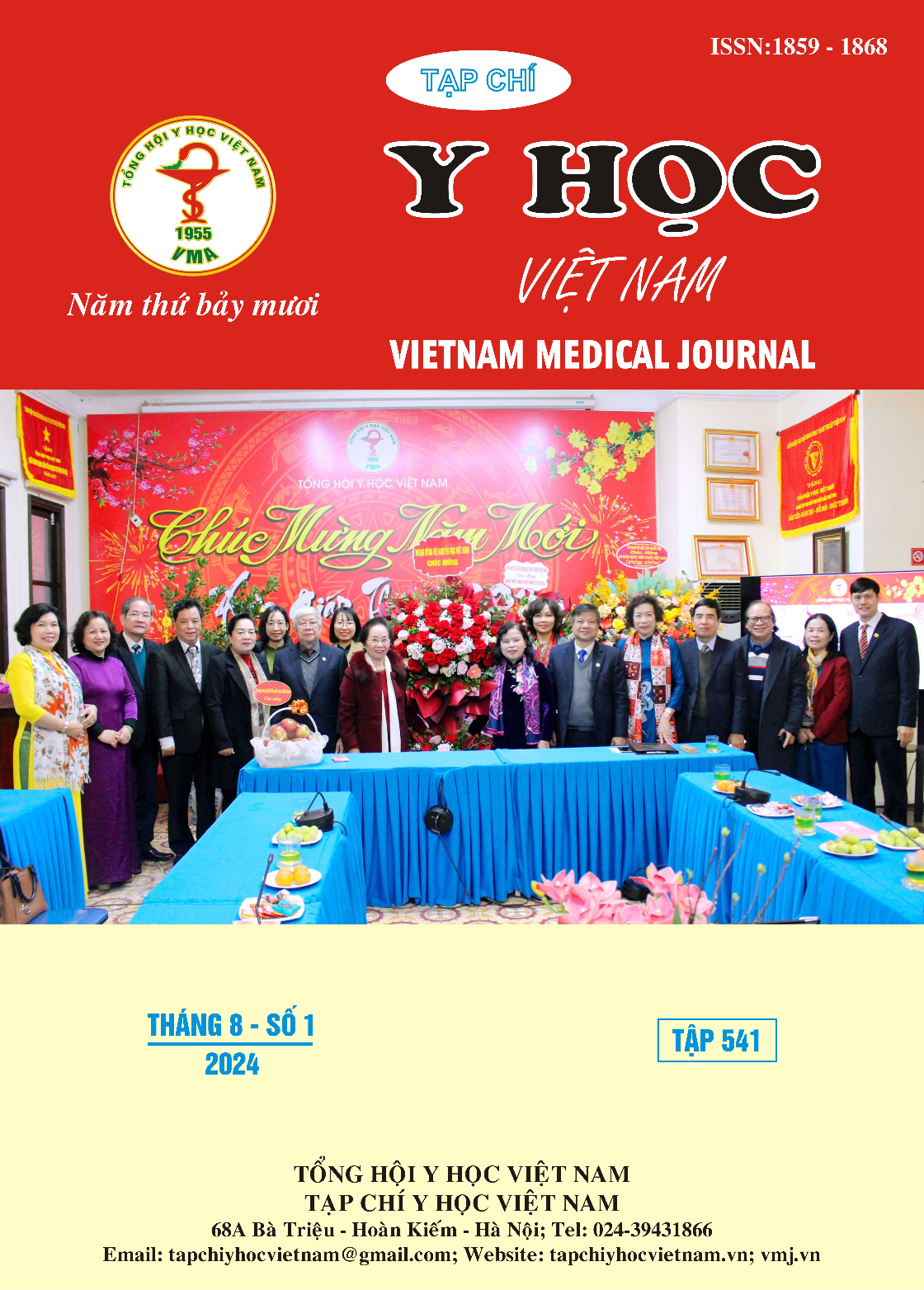THE TREATMENT RESULTS OF ANTI-VITAMIN K ANTICOAGULANT
Main Article Content
Abstract
Introduction: The International Normalized Ratio (INR) and Time in Therapeutic Range (TTR) are two metrics used to evaluate the effectiveness of treatment and to adjust dosages appropriately based on clinical progress in patients indicated for the use of vitamin K antagonist anticoagulants. Objective: To investigate the treatment outcomes of vitamin K antagonist anticoagulants. Methods: A retrospective cross-sectional study was conducted. All patients prescribed vitamin K antagonist anticoagulants who revisited between January 2023 and June 2023 in Outpatient Department - University Medical Center HCMC and had at least four INR test results were included. Results: A total of 177 cases were surveyed, with an average age of 50.75 ± 15.90 years, and a male-to-female ratio of 0.83. The average follow-up duration was 39.85 months. Mechanical heart valves were present in 74.01% of cases, and isolated atrial fibrillation in 16.4%. The weekly dosage for warfarin was 10.77 ± 5.56 mg, and for acenocoumarol, 22.81 ± 8.49 mg. The average INR was 2.24 ± 0.91, with only 44.63% of cases achieving therapeutic targets, and the average TTR was 46.46 ± 29.28%. There were 25 cases of adverse events related to the medication. Conclusion: Vitamin K antagonist anticoagulants are effective in preventing thromboembolic events in mandatory indications. However, the rate of achieving therapeutic INR targets (44.63%) and time within the therapeutic range according to Rosendaal (46.46 ± 29.28%) are not high. Therefore, improving clinical monitoring, testing, and adherence to treatment is necessary to achieve better outcomes.
Article Details
Keywords
Vitamin K antagonist anticoagulants, thromboembolism, bleeding.
References
2. Steffel J, Collins R, Antz M, Cornu P, Desteghe L, Haeusler KG, Oldgren J, Reinecke H, Roldan-Schilling V, Rowell N, Sinnaeve P, Vanassche T, Potpara T, Camm AJ, Heidbüchel H; External reviewers. 2021 European Heart Rhythm Association Practical Guide on the Use of Non-Vitamin K Antagonist Oral Anticoagulants in Patients with Atrial Fibrillation. Europace. 2021 Oct 9;23(10):1612-1676. doi: 10.1093/europace/euab065. Erratum in: Europace. 2021 Jun 28;: PMID: 33895845.
3. Guidelines for warfarin management in the community. Published by the State of Queensland (Queensland Health) and the Royal Flying Doctor Service Queensland Section, May, 2016. https://www.health.qld.gov.au/__data/ assets/pdf_file/0025/443806/warfarin-guidelines.pdf
4. Ansell J, Hirsh J, Hylek E, và cs. Pharmacology and management of the vitamin K antagonists: American College of Chest Physicians evidence based clinical practice guidelines (8th edition). Chest 2008;133:160S-198S.
5. Rosendaal FR, Cannegieter SC, van der Meer FJ, Briët E. A method to determine the optimal intensity of oral anticoagulant therapy. Thromb Haemost. 1993 Mar 1;69(3):236-9. PMID: 8470047.
6. Olusegun Osinbowale, Monzr Al Malki, Andrew Schade, John R Bartholomew. An algorithm for managing warfarin resistance. Cleve Clin J Med. 2009 Dec;76(12):724-30. doi: 10.3949/ccjm.76a.09062.
7. Hindricks G, Potpara T, Dagres N, et al. 2020 ESC Guidelines for the diagnosis and management of atrial fibrillation developed in collaboration with the European Association for Cardio-Thoracic Surgery (EACTS): The Task Force for the diagnosis and management of atrial fibrillation of the European Society of Cardiology (ESC) Developed with the special contribution of the European Heart Rhythm Association (EHRA) of the ES. European Heart Journal, Volume 42, Issue 5, 1 February 2021, Pages 373-498. https://doi.org/10.1093/eurheartj/ehaa612
8. Gallagher AM, Setakis E, Plumb JM, Clemens A, van Staa TP. Risks of stroke and mortality associated with suboptimal anticoagulation in atrial fibrillation patients. Thromb Haemost. 2011 Nov;106(5):968-77. doi: 10.1160/TH11-05-0353. Epub 2011 Sep 8. PMID: 21901239.


